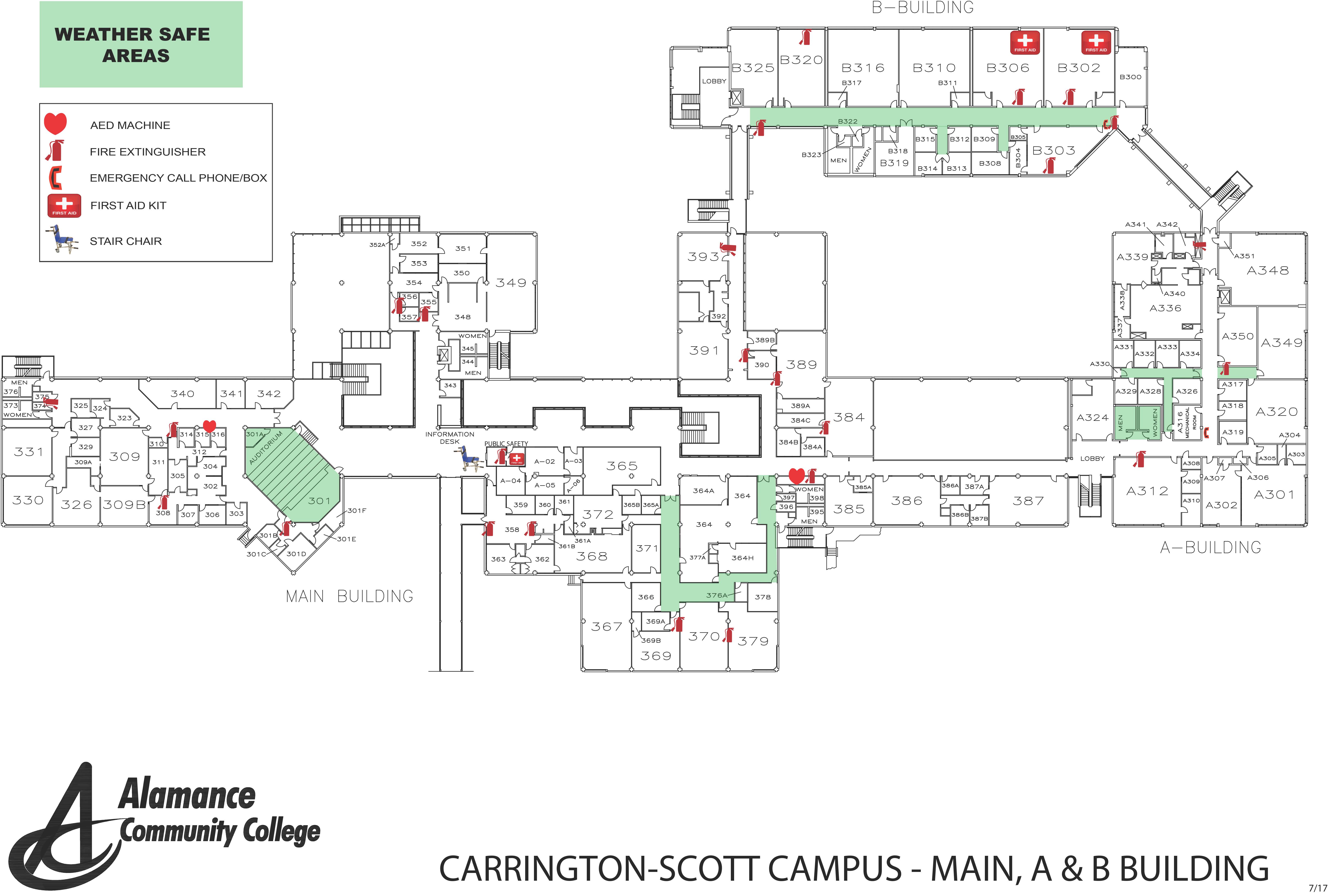Weather Safety
WEATHER SAFETY
Severe Thunderstorms
Severe thunderstorms are the most likely natural occurrence that could affect the college. To lessen the possibility of injury the following steps should be followed:
- If you can hear thunder outside, you are close enough to the storm to be struck by lightning. Seek shelter immediately.
- When a storm approaches find shelter in a building or hard top car (avoid convertibles). Keep car windows closed.
- Give any medical assistance that you have been trained to administer. If breathing has stopped, begin rescue breathing. If the heart has stopped beating, a trained person should give CPR. DO NOT cease CPR before being relieved by higher trained emergency medical personnel. If the person has a pulse and is breathing, look and care for other possible injuries.
Tornado
It is the responsibility of staff and faculty members to take charge during tornadoes.
Be aware that the only alert of a tornado may be your own observations; you may be the first to learn of a watch or warning. Know the difference.
Campus Public Safety will also issue a warning through ACC ALERTS if possible.
- Tornado Watch. A tornado is possible in and near the watch area. Review and discuss your emergency plans. Be ready to act quickly if a warning is issued or you suspect a tornado approaching. Acting early will help save lives. Tornado Warning: A tornado has been spotted or indicated by weather radar.
- Tornado warnings. indicate imminent danger to life and property. Immediately go to the Severe Weather Shelter Area for the building you occupy. If time does not permit reaching the Severe Weather Shelter Area, go to an interior room (closet, hallway or restroom) on the lowest floor possible away from windows. Crouch beside an interior wall, lower and cover your head with your arms.
- Upon learning of a warning, staff and faculty members must immediately announce “tornado”
to everyone in their area and begin directing building occupants to the Severe Weather
Shelter Area within the building. Remember, time is of the essence in getting people to the Severe Weather Shelter Area.
(Map of those locations can be found below.)
- As they make their way to safe shelter, Campus Public Safety Officers will go through buildings spreading the word and assisting in directing occupants. In the event of a tornado warning or a tornado sighting, the actions listed below are appropriate:
- DO NOT activate fire alarms; no one is to exit the building
- Additionally, DO NOT expect to hear an audible alarm during a tornado.
- If a tornado strikes before you can reach the Severe Weather Shelter Area, go into an interior room (closet, hallway or restroom) away from windows and doors.
- Once in the Severe Weather Shelter, instruct occupants to crouch against an interior wall, lower and cover their heads with their arms.
- Remain in the Severe Weather Shelter Area until the tornado has passed or an “all clear” is given by Campus Public Safety.
- Evacuate the building when it is safe to do so. When exiting a building, watch for fallen power lines.
- If you smell gas or hear a blowing or hissing noise, open a window and quickly get everyone out of the building and advise Campus Public Safety at 336-506–4286 or 336-260-9203.
- Check for injuries. If you are trained, provide first aid to victims until emergency responders arrive.
- Stay out of damaged buildings.
